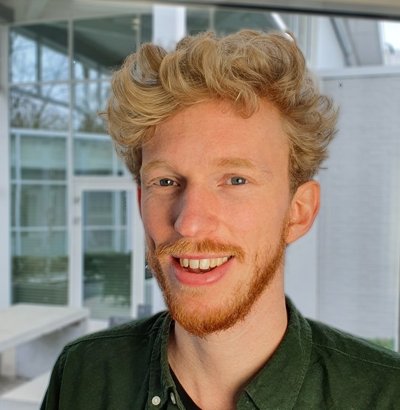Quantifying Training Load During Outdoor Running using Inertial Sensors - Development and Application of Ground Reaction Force Estimation Algorithms
Bouke Scheltinga is a PhD student in the Department of Biomedical Signals and Systems. (Co)Promotors are prof.dr. J.H. Buurke, prof.dr. J.N. Kok and dr. J. Reenalda from the Faculty of Electrical Engineering, Mathematics and Computer Science.
 Running is one of the most popular sports worldwide, offering numerous health benefits but also carrying a high risk of overuse injuries. These injuries, caused by repetitive strain on musculoskeletal tissues, often lead to temporary or permanent cessation of running. Understanding the causes of running injuries is complex, involving a non-linear interaction between multiple risk factors and exposure to running. Overuse injuries can be viewed as a mechanical fatigue phenomenon, where repetitive loading causes biological damage. The importance of loading highlights the need for quantification of training loads to better understand injury risk. While this quantification is feasible in controlled settings like gait laboratories, the real challenge lies in capturing these loads in natural outdoor environments.
Running is one of the most popular sports worldwide, offering numerous health benefits but also carrying a high risk of overuse injuries. These injuries, caused by repetitive strain on musculoskeletal tissues, often lead to temporary or permanent cessation of running. Understanding the causes of running injuries is complex, involving a non-linear interaction between multiple risk factors and exposure to running. Overuse injuries can be viewed as a mechanical fatigue phenomenon, where repetitive loading causes biological damage. The importance of loading highlights the need for quantification of training loads to better understand injury risk. While this quantification is feasible in controlled settings like gait laboratories, the real challenge lies in capturing these loads in natural outdoor environments.
This thesis aimed to quantify training loads during outdoor running using a minimal sensor setup. A key contribution was the development of algorithms using inertial measurement units (IMUs) to estimate ground reaction forces (GRFs), a critical parameter for running biomechanics. The research demonstrated the feasibility of estimating GRFs with good accuracy in real-world conditions. It also evaluated the repeatability of GRF estimation across different sessions, showing promising results for outdoor applications. Finally, the relationship between cumulative biomechanical load and perceived exertion during various training sessions was investigated. Load perceived by runners did not match the load quantified by the sensors. This finding emphasizes the importance of combining subjective measures, like perceived exertion, with objective metrics to gain a holistic understanding of training load and its effects on runners.
The thesis contributes to the field by advancing methods to quantify load in outdoor settings, but it underscores the need for longitudinal studies to explore the interplay between biomechanical loads, physiological loads, and injury development. Collaborative efforts across institutions are crucial to addressing the challenges of such studies and enhancing injury prevention strategies.





